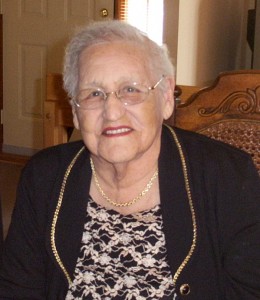Wawatay News, published by Wawatay Native Communications Society since 1974, is an Aboriginal newspaper serving Northern Ontario.
“This is a story built upon happy memories, a story of hardship and struggle. It is a true account of a Metis woman’s life. The material for this article was collected through my many years of knowing her and listening to her wisdom. This is the story of my grandmother Josephine Cone.” (Joanne Wetalainen)
Mail-order ballet lessons, travelling the Northwestern Ontario waters by right with two young children and guiding groups of prospectors through the wilderness in sub-zero temperatures are all treasured memories of seventy-year old Josephine Cone.
Born in May 1913 in Dinorwic, Ontario, to an Italian father and an Objiway mother, Josephine has a wealth of life’s experience to share with those willing to listen. She doesn’t call herself an “Ojibway” nor does she call herself a “Metis” but readily admits it was her mother who was the driving force in her upbringing.
After only a few years of marriage, her father became tri-lingual; speaking not only native Italian and English but learning to speak fluently in Objiway. “He could speak better Indian than some of the Indians in Dinorwic could,” Josephine recalls affectionately.
























